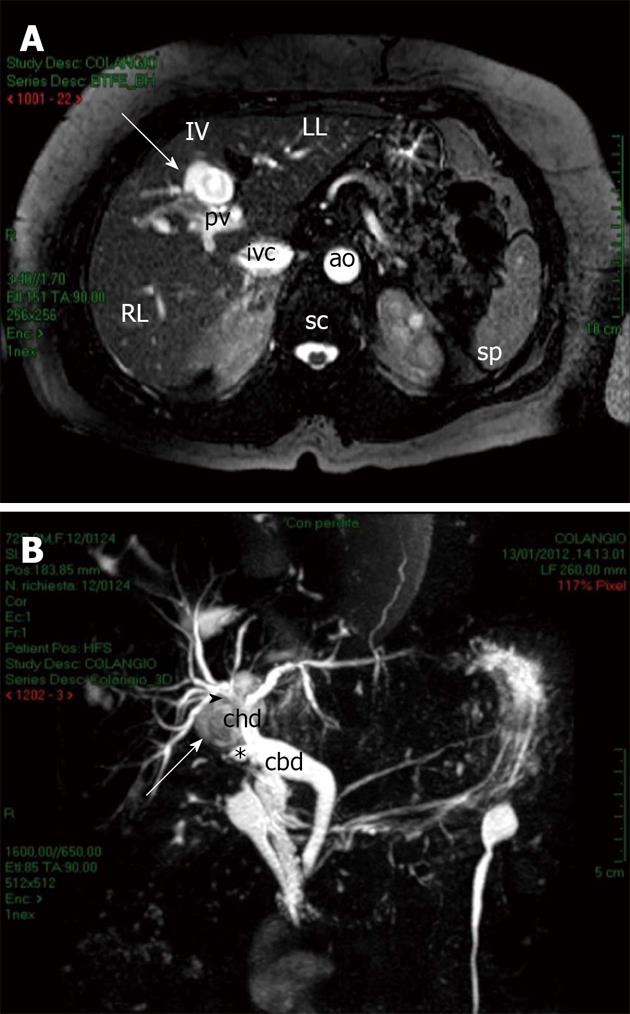Copyright
©2013 Baishideng Publishing Group Co.
World J Radiol. May 28, 2013; 5(5): 220-225
Published online May 28, 2013. doi: 10.4329/wjr.v5.i5.220
Published online May 28, 2013. doi: 10.4329/wjr.v5.i5.220
Figure 3 Biloma features on magnetic resonance imaging.
A: On T2-weighted images, the biloma appeared as a hyperintense lesion located in the IV hepatic segment (arrow); B: Contrast enhanced magnetic resonance cholangiopancreatography shows the biloma as a well-defined, rounded lesion (arrow) arising posteriorly to the confluence of right and left hepatic ducts into the common hepatic duct (arrowhead) in proximity to the stump of the remnant cystic duct (star). RL: Right hepatic lobe; LL: Left hepatic lobe; IV: Fourth hepatic segment; ivc: Inferior vena cava; ao: Aorta; pv: Portal vein; sc: Spinal column; sp: Spleen; chd: Common hepatic duct; cbd: Common bile duct.
- Citation: Tana C, D’Alessandro P, Tartaro A, Tana M, Mezzetti A, Schiavone C. Sonographic assessment of a suspected biloma: A case report and review of the literature. World J Radiol 2013; 5(5): 220-225
- URL: https://www.wjgnet.com/1949-8470/full/v5/i5/220.htm
- DOI: https://dx.doi.org/10.4329/wjr.v5.i5.220









